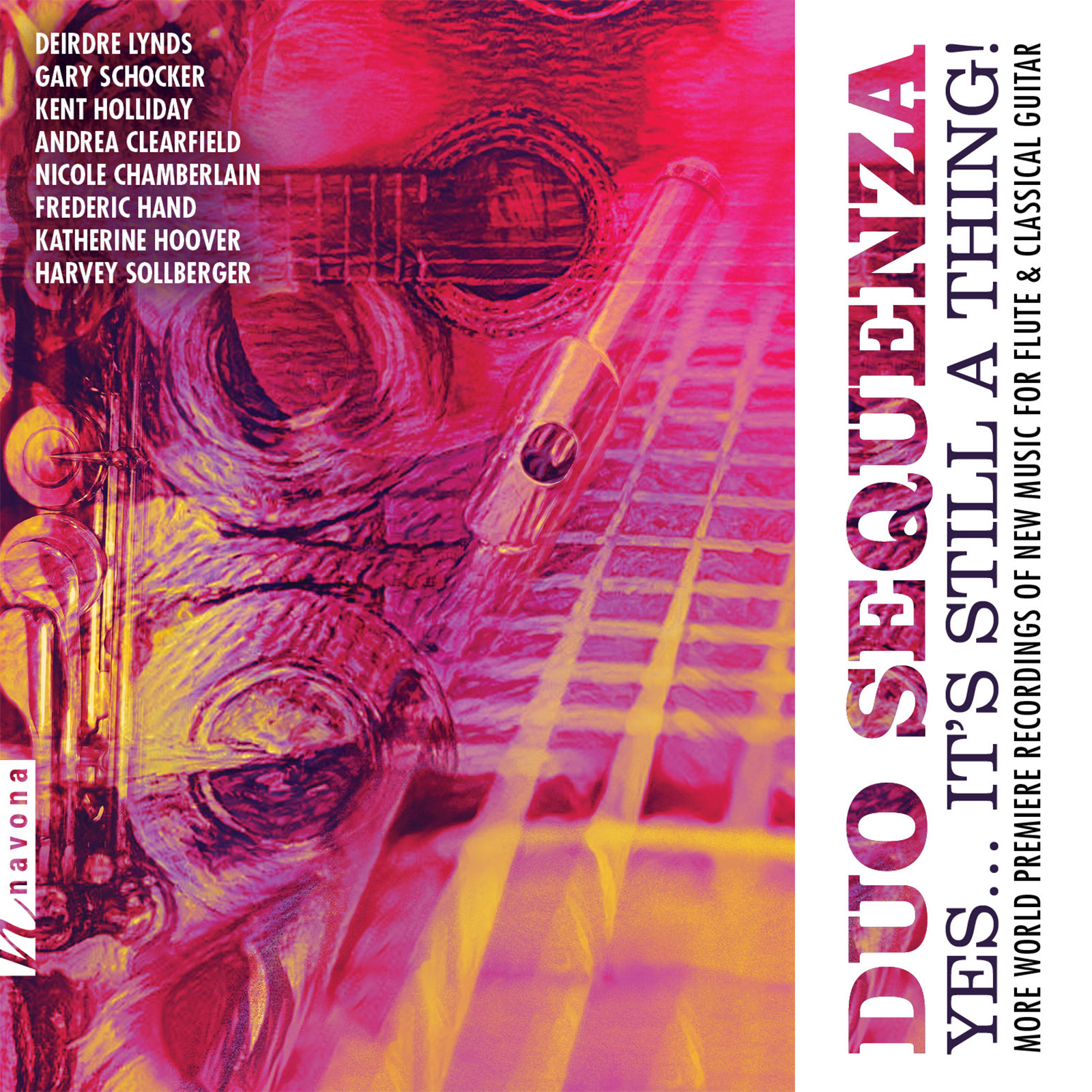
Album: YES… IT’S STILL A THING!
Artist: Duo Sequenza
Release Date: September 9, 2022
MORE WORLD PREMIERE RECORDINGS OF NEW MUSIC FOR FLUTE & CLASSICAL GUITAR
Following their Navona Records debut in 2019, the Indiana based Duo Sequenza returns with YES… IT’S STILL A THING!, a new program geared towards building new audiences for today’s classical music and promoting the work of living composers.
Comprised of flutist Debra Silvert and classical guitarist Paul Bowman, Duo Sequenza brings an enchanting and harmonious quality that showcase the complementary capabilities of their respective instruments. From emotive and introspective works to scenic vistas painted in sound, the duo once again proves their musical chops and adaptability across a wide array of compositional styles.
The program opens with David Noon’s Partita Op. 103 containing four movements reminiscent of Baroque dance form. The soaring work Mesquanowat’, composed by Jerry Owen and named for the Mesquakie word for the red-tailed hawk, captures the spirit of both the majestic bird and the Mesquakie tribe.
The two pieces that comprise Marc Mellits’ humbly named Two Pieces for Flute and Guitar highlight his unique musical style: an eclectic combination of driving rhythms, sumptuous lyricism, and vibrant orchestrations that combine to communicate deeply with the listener. “Fast” exploits changing meters and rhythmic minimalism in a way that is distinctively his own, while “Elegy for Lefty; Expressive” is compellingly poignant and haunting.
Duets Exhibition, composed by Amin Sharifi, is comprised of a set of short pieces designed to put listeners inside an experience in which all their other senses are engaged beyond mere listening. The album concludes with Jorge Muñiz’s South Shore Suite, written as a metaphor for a journey on the South Shore Rail Line. It draws upon diverse musical elements from the Midwest and Indiana vernacular: jazz, blues, country, R&B, and more. Its first movement, “Prologue: South Bend, Indiana” establishes the train metaphor as a rhythmic ostinato with unexpected meter changes, and in its final movement, “Epilogue: Chicago,” played attacca, the sense of the train’s motion is more and more apparent as the train draws closer to its destination of Chicago.

